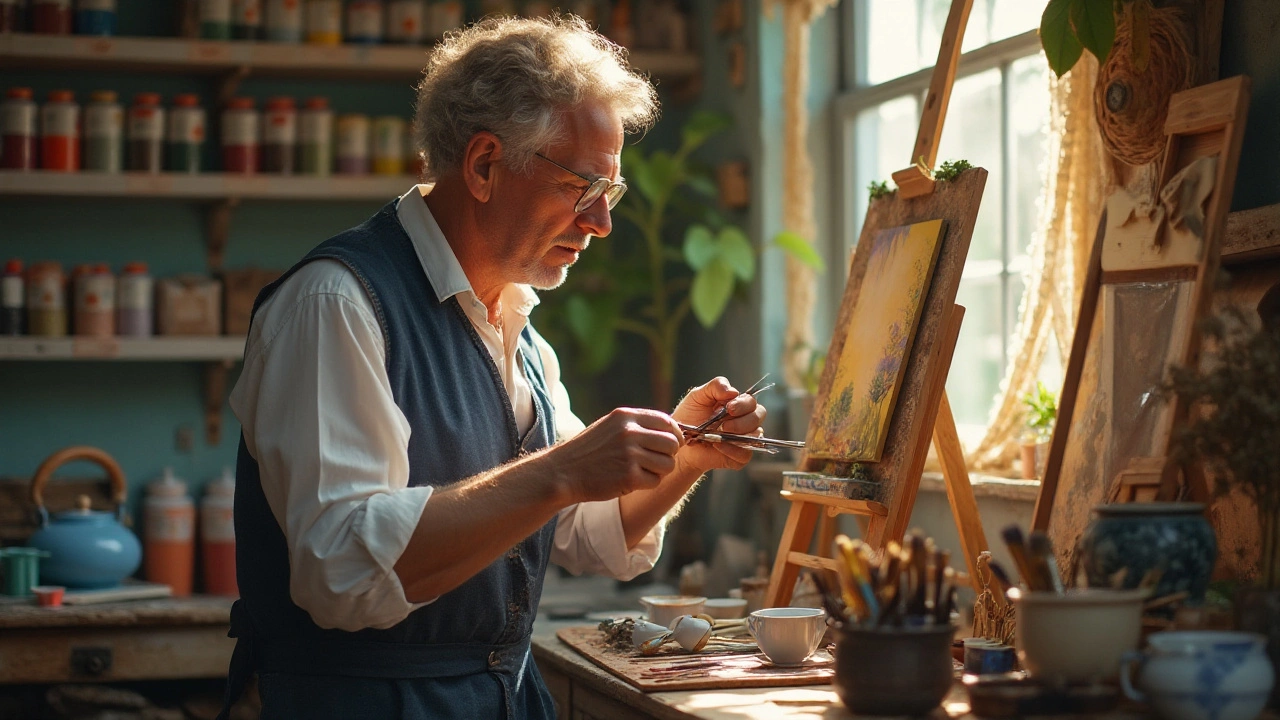Art Methods: Simple Tips for Painting, Sculpture, and More
Want to improve your art without spending years in a studio? You’re in the right place. Below you’ll find down‑to‑earth methods that work for painters, sculptors, and anyone curious about modern and abstract art. Each tip is something you can try right now with basic supplies.
Painting Techniques That Actually Save Time
If you ever smudged a face in an oil painting, you’re not alone. The trick is to treat wet, tacky, and dry layers differently. For wet paint, gently wipe with a soft cloth and add a fresh glaze to blend colors. When the paint is tacky, use a fine sable brush to lift off excess pigment before it fully sets. For dry layers, a thin scumble of thin oil can hide mistakes without repainting the whole area. The same ideas work for acrylics and watercolors – start light, build up, and fix mistakes with glazing or lifting.
Portrait painters often wonder whether to sketch first. A quick pencil outline helps you place features accurately, but you can also jump straight into watercolor washes if you prefer a spontaneous look. Many artists start with a light wash, let it dry, then add details. This method keeps the paper from becoming too saturated and lets you control the value hierarchy.
Sculpture and Mixed Media Made Easy
Thinking about sculpting but scared of the mess? Begin with the easiest projects: use air‑dry clay or even recycled cardboard. Shape simple forms like fruit or abstract blocks, then reinforce with cheap wire or paper mache. The key is to keep the structure stable early on – a little cardboard inside a clay bowl prevents it from cracking later.
When budget matters, look for cheap materials. Everyday trash like bottle caps, wire coat hangers, or old wood can become interesting textures. Glue them together, add a coat of plaster, and you’ve got a ready‑to‑paint sculpture without breaking the bank. Experiment with mixed media by combining paint, found objects, and digital prints for a contemporary feel.
Abstract art often feels mysterious, but its core method is about feeling, not rules. Start with a single emotion, choose a color palette that matches it, then lay down shapes without overthinking. You don’t need to read a textbook – just let the canvas respond. Many artists use the “rule of thirds” to place shapes, creating balance without formal composition training.
Modern and contemporary styles are constantly shifting. To stay current, try digital tools alongside traditional ones. Simple software can turn a hand‑drawn sketch into a polished digital piece, letting you experiment with AI textures or NFT concepts. You don’t have to become a tech wizard; a basic drawing tablet and free software will open new doors.
Finally, remember that every method is a starting point. Mix painting fixes with sculpting shortcuts, add a splash of abstract thinking, and you’ll develop a personal workflow that fits your style. Keep a notebook of what works, tweak as you go, and enjoy the process more than the perfect result.

16 Oct 2024
The 3 P's of painting—Preparation, Patience, and Precision—are essential elements for artists looking to master the art of oil painting. This article delves into each of these foundational aspects, providing insightful tips and interesting facts that can aid both beginners and seasoned artists alike. Learn about the significance of a well-prepared canvas, the virtue of patience in layering colors, and the importance of precision in brushstroke techniques. Understand how embracing these principles can transform your approach to oil painting.
Continue reading...
